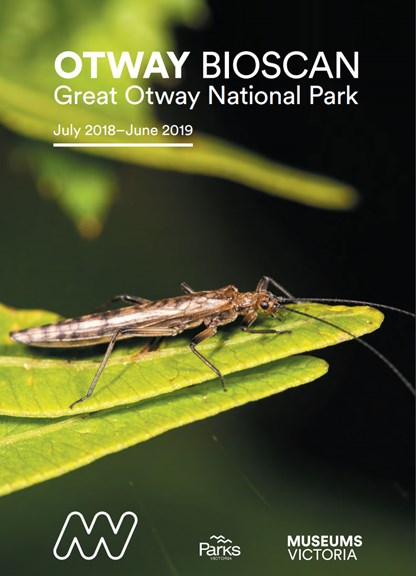Otway Bioscan report
Great Otway National Park
July 2018–June 2019
Summary
On December 19, 2015, lightning strikes ignited two bushfires in the Barwon Otway Region, one near Delaneys Road and the other near Jamieson Track. In the early stages, these fires, which became known as the Wye River–Jamieson Track fire, were largely controlled and contained but the combination of strong winds, heat, and dry conditions resulted in the fire jumping containment lines on December 25 and by Boxing Day 98 houses in Wye River and 18 in Separation Creek had been destroyed.
The Otway Ranges are characterised by steep terrain and complex gully systems that are difficult to access and thus difficult to defend from fire. The Wye River–Jamieson Track fire lasted for 34 days and approximately 2500 hectares of land was burned, including areas within the Great Otway National Park.
Bushfires often have devastating direct and indirect consequences for people living and working in fire affected areas. In addition to the loss of homes and belongings, businesses are often affected by a reduction in the number of tourists visiting the region. This may be due, in part, to the loss of tourist infrastructure (e.g. holiday rentals) or the perceived loss of nature and natural beauty.
As part of the Wye River Recovery Project, a collaboration between Museums Victoria (MV) and Parks Victoria (PV) was established and the Otway Bioscan project was born. In spite of the devastating effects of the 2015/16 fires, the Great Otway National Park (GONP) remains an area of important biological, geological and cultural value and the main aim of the Otway Bioscan was to further investigate, discover and showcase (to locals and tourists) the national park’s rich and resilient environment.
From September 2018 to March 2019 MV and PV staff, scientists and volunteers carried out a series of biological surveys within the GONP. The groups covered included birds, freshwater fish, insects (i.e. aquatic species, moss bugs and moths), small mammals, reptiles and amphibians. In addition, geology and palaeontology pilot surveys were conducted in the western part of the park.
The combined expertise of MV and PV staff resulted in the collection of important data that adds to our knowledge and understanding of the biological diversity within the park, which in turn contributes to conservation management. In addition, the rich imagery, data and knowledge captured during these surveys will be a shared resource that PV can use to promote the natural values of the Otway Region. The Otway Bioscan incorporated a range of opportunities for community participation and engagement. These events allowed for knowledge transfer and exploration of the natural world at a local level, while at the same time building and strengthening community relationships, particularly in the Wye River and Separation Creek areas.
Objectives
The major objectives of the Otway Bioscan were:
- To improve ecosystem knowledge and understanding of biodiversity values of the GONP.
- To encourage community involvement.
- To provide opportunities to establish citizen
science initiatives. - To support the recovery of fire-affected communities.
- To work collaboratively to provide opportunities for knowledge sharing and skills transfer, and identify avenues for future collaboration.
